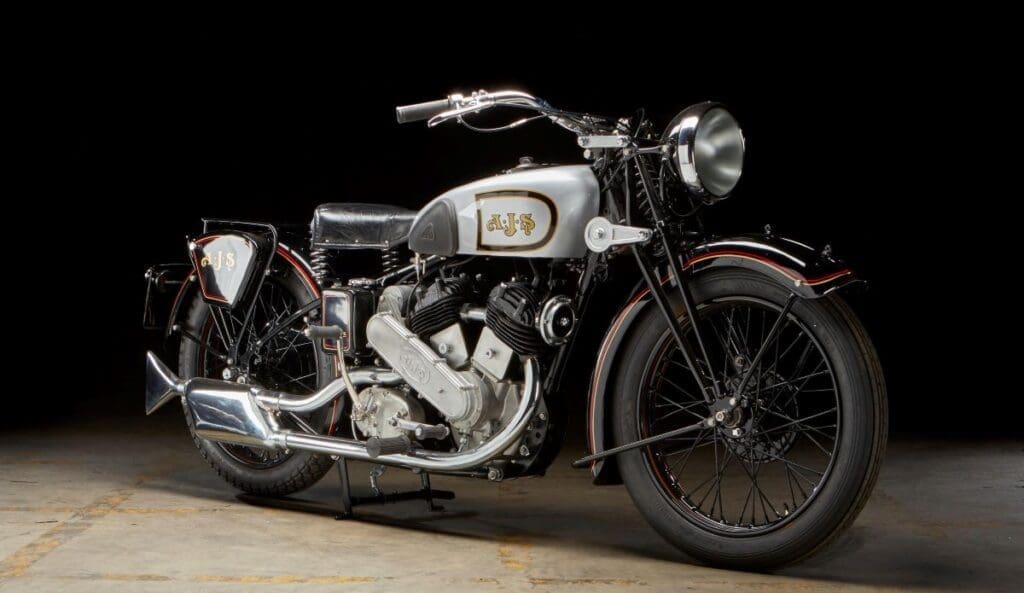Vintage V-twins almost took over RealClassic issues 225 and 226, with roadtests of litre-class prewar beasts from Royal Enfield and AJS. Rowena Hoseason investigates the background to the Ajay family…

The Stevens family built their first V-twin more than a century ago, when AJS were still firmly rooted in Wolverhampton. Introduced in 1912, the sidevalve Model D initially used a 631cc motor with a two-speed gearbox, then became a 698cc with a three-speed box, then 748cc for 1914. From 1921 and for the rest of the Twenties the engine size settled at 799cc which provided sufficient propulsion for sidecar duties.
These V-twins weren’t sports bikes, of course; that role was fulfilled by the firm’s small singles which would evolve into the famous Big Port racers. Rather, the heavyweights offered reliable family transport which would propel mum, dad and offspring at 35-40mph. VMCC founder Titch Allen tested one such 799cc outfit in the 1970s and found it loud and vibratory – ‘the sound effect is like that of a combine harvester’ – but with adequate performance for its period, and above-average brakes and easy steering.
Enjoy more classic motorcycle reading, Click here to subscribe to one of our leading magazines.
‘The multi-plate but single spring clutch would slip and drag,’ said Titch, ‘while crash-sliding gear selection was awkward and the gears were prone to failure. Access to the valve gear for adjustment was easy, however, and the V-twin was overall ‘a pleasant enough machine for family touring.’
Most motorcycle manufacturers fell on hard times during the depression, but AJS were in trouble before then. Sales shrunk, profits were minimal and shareholder dividends dwindled during the 1920s. AJS had diversified into other automotive activities, such as building car bodies for Clyno, but those revenues ended when Clyno went into receivership. AJS also poured resources into other projects: commercial vehicles, radio equipment and the company’s own small car.

Meanwhile over in the motorcycling division, innovative engineering and competition success were considered crucial to maintain the company’s profile… although they didn’t have a particularly positive effect on profits. The overhead cam competition singles arrived in 1927 (they took a couple of years to achieve racing greatness at the TT, by which time few customers could afford them), with cammy roadsters joining ten other models in the 1928 customer range.
AJS had changed their model designations halfway through the decade, adopting a year-letter code which started with E in 1925. At that point there were two versions of the V-twin, the E1 and E2 which were equipped with a magdyno or magneto, and electric or gas carbide lights.
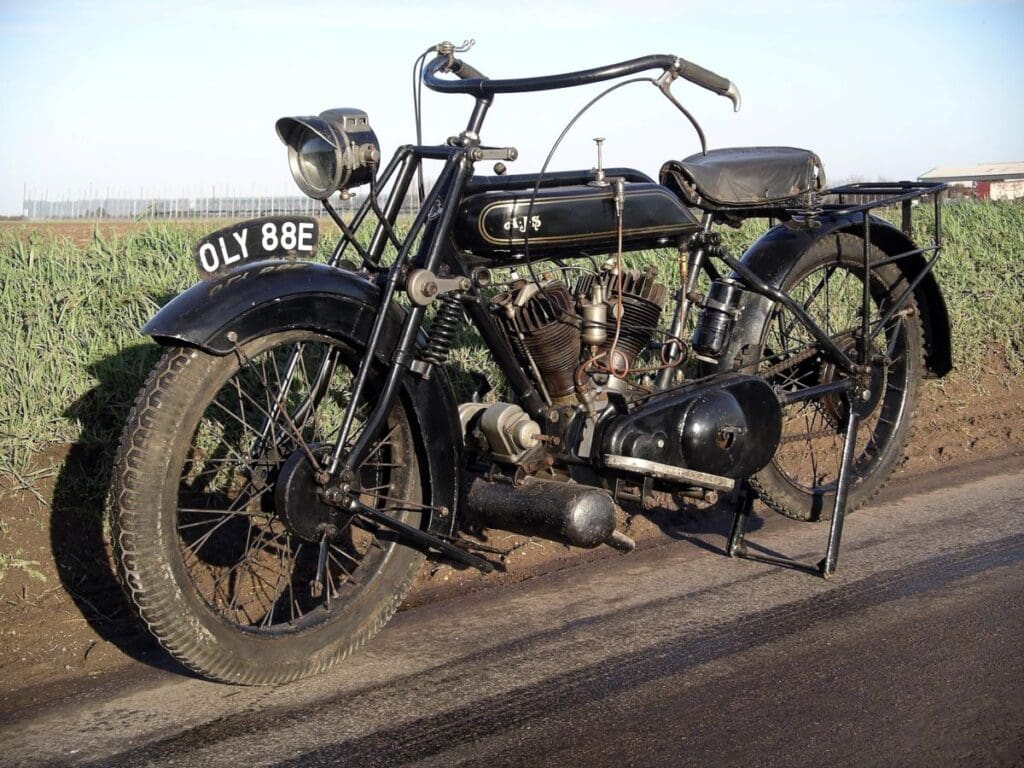
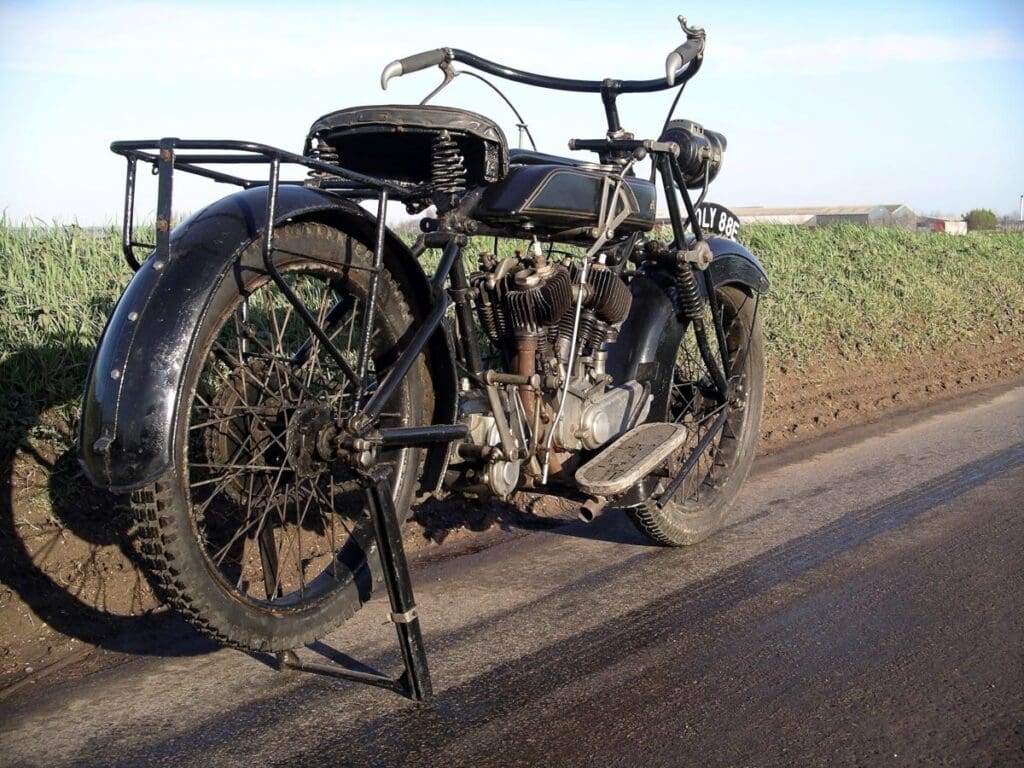
For 1929 even more machines appeared in the brochure; no less than 14 motorcycles with 13 sidecar options. This was also the moment for a significant upgrade with new frames employing a straight top tube; front suspension with tubular, triangulated fork blades; saddle-style petrol tanks with an inset speedo, and larger mudguards for better weather protection on the touring models. Engines became cleaner and quieter, following the trend towards dry sump lubrication and away from total loss oiling.
The sidevalve V-twin was radically redesigned, growing to 84mm by 90mm to give 996cc. The three-speed gearbox was mildly modified and an auxiliary oil feed was incorporated into the cylinder walls. The company claimed that the new twin engine offered ‘an enormous reserve of power coupled with flexibility, docility at low speeds and silence.’
The year letter for 1929 was M and the V-twin was again offered in two states of trim, the deluxe M1 and the standard M2. The M1 weighed 385lb and cost £76.10s while the M2 weighed 40lb less and cost just £66.
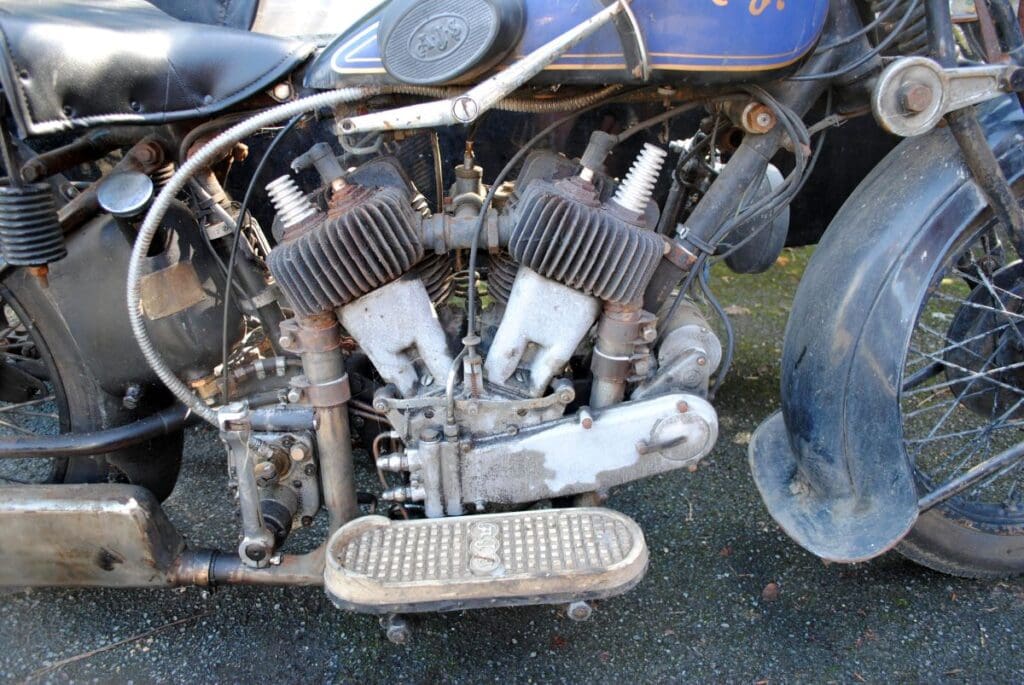
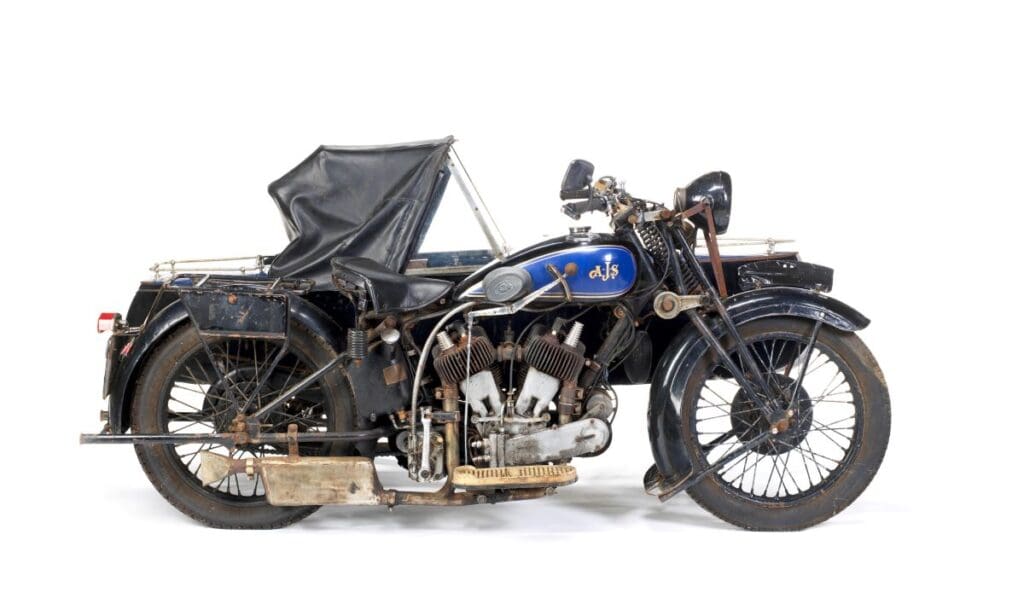
Trading conditions remained tough and the cammy roadsters disappeared from the main catalogue the following year. AJS skipped the letters O and P to give 1930’s bikes the R designation. There was only one V-twin, the R2. Its price had fallen to £63, perhaps reflecting the 10% pay cut which was imposed on the workforce that year. Financially, AJS was scrabbling for survival…
…which makes the 1931 range all the more remarkable because it featured five new models. The S2 was given a significant update with detachable aluminium cylinder heads, improved engine shock absorber and a new semi-cradle frame. The Lucas magneto was moved to behind the rear cylinder and a new style of silencer introduced. The saddle could be easily adjusted between three positions, and the black enamel handlebars incorporated integral levers. The S2 retained the interchangeable QD wheels, hand gearchange and foot clutch typical of the time, and weighed 375lb. It also looked extremely smart, and was sold as being suitable either for sidecar duties or as a relaxed gentleman’s tourer.
However, there was another V-twin kid on the block. AJS was inches away from insolvency but they still brought out the ‘sensational’ S3, a 498cc transverse V-twin. Its mechanical complexity might well have caused a sensation – chain-driven camshafts, no cam followers, shaft primary drive feeding a spiral bevel which transmitted power through a right-angle to the fully-enclosed final drive chain – but it’s hard to imagine many customers queuing up in 1931 for another 355lb luxury tourer. Top speed was 65mph and the S3’s major selling point appeared to be that it would cruise effortlessly… at 45-50mph.

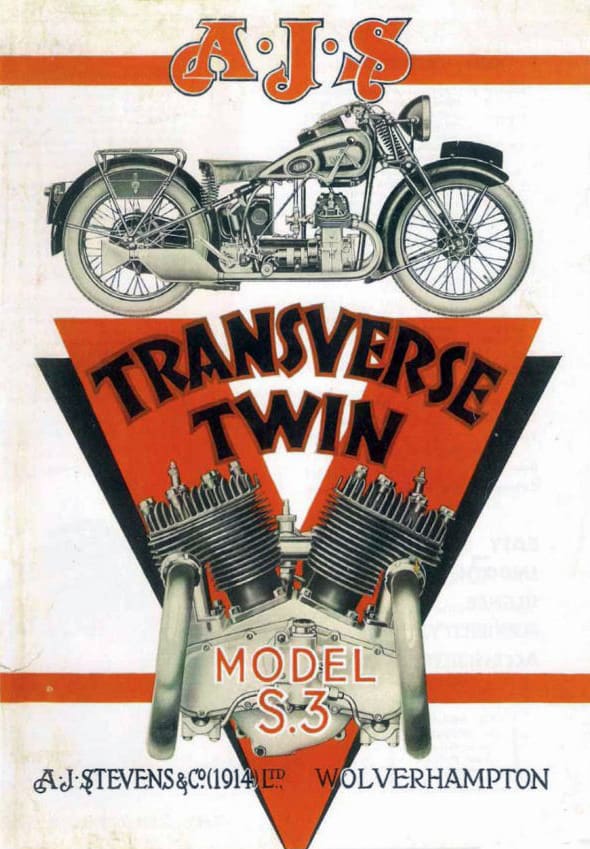
The company’s accounts showed a loss of nearly £80,000 that year and the business went into liquidation in the autumn. BSA put in a bid to buy the business but eventually the Collier brothers from London bought the name and manufacturing rights for £20,000. After the transition to Plumstead, the AJS V-twin was resurrected from 1933 but this Model 2 was a very different beast which owed more to the Matchless Model X than its Wolverhampton predecessors.
